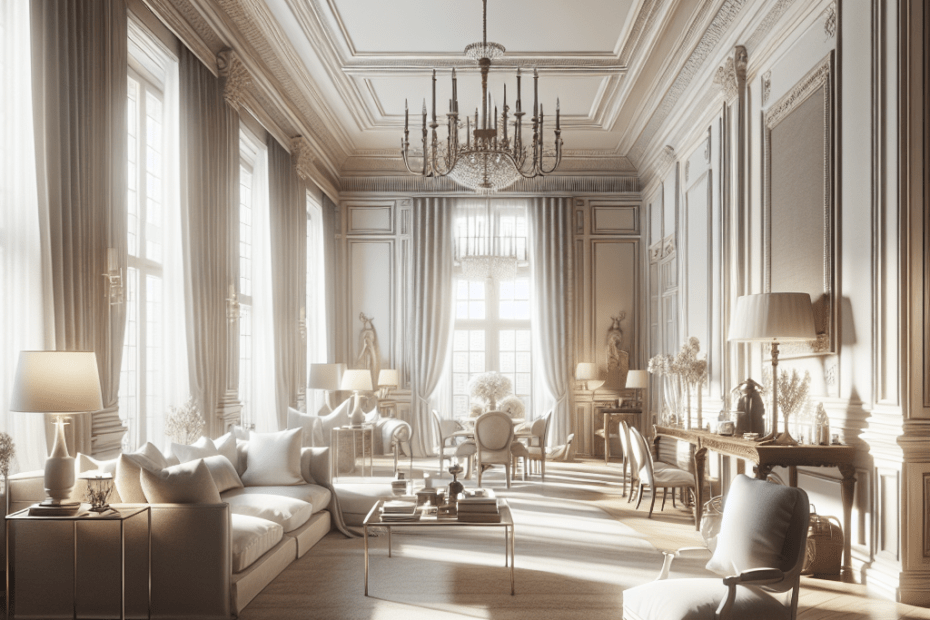“`html
Designing with Neutrals for a Timeless Look
Home designers have found that the allure of timeless neutral design never fades. Neutrals create an environment that remains appealing through changing trends. While colorful interiors come and go, neutral shades—like beige, white, gray, and taupe—offer a lasting elegance that other palettes struggle to match.
In today’s rapidly changing world, homeowners often seek a sense of stability and serenity in their living spaces. Neutrals provide a canvas that’s both versatile and enduring. According to a survey by Houzz, 41% of homeowners are opting for neutral color palettes when updating their home’s interior (Houzz). These colors provide a foundation upon which other design elements can effortlessly build, offering both reliability and flexibility.
The Appeal of Timeless Neutral Design
Neutrals possess an uncanny ability to create balance. They don’t overpower but instead allow architectural features or bold pieces of furniture to shine. Neutrals are the silent supporters of a room’s design, providing cohesion and flow from one space to another. Many homeowners find peace in neutral environments, where distractions are minimized, and focus is on comfort and function.
For those in design, neutrals mean more than simple color choices. They are essential to creating rooms that invite calm and appreciation for essential forms and textures. With neutrals, textures gain prominence, encouraging creativity with fabrics and materials, from the smooth feel of leather to the coarseness of natural wool.
Effective Tips for Designing with Neutrals
- Mixing Textures: Layer various materials like cotton, linen, wood, and metals to elevate the design and prevent it from looking flat.
- Subtle Contrast: Use various shades of neutrals to create depth. Pair lighter and darker tones for a more dynamic space.
- Accent with Nature: Natural elements like plants or stone accents can breathe life into a neutral space.
- Lighting Matters: Proper lighting enhances the nuances in neutral hues, ensuring they appear warm and inviting.
Color Psychology of Neutrals
Neutral colors contribute significantly to psychological well-being. Beige and taupe create warmth and comfort, while shades of gray offer sophistication and balance. Whites suggest clarity and purity, often making spaces feel larger and brighter. Incorporating these colors strategically can influence mood and complement the home’s architecture and design.
Statistics on Neutrals in Home Design
The choice of neutrals in home design is far from random. According to the National Association of Realtors, nearly 63% of designers report that clients prefer neutral tones when it comes to real estate because they contribute to higher resale values (National Association of Realtors). These statistics demonstrate the tangible value that timeless neutral design can bring to a home.
| Aspect | Preference (%) |
|---|---|
| Neutral Color Preference | 41% |
| Contribution to Resale Value | 63% |
Challenges in Creating a Timeless Neutral Design
Designing with neutrals isn’t without its challenges. Maintaining interest within a neutral palette requires a careful blend of textures and accent pieces. Designers must avoid the trap of making spaces appear dull or uninspired. They must also consider natural light, as it can transform the appearance of neutral colors throughout the day.
Overall, a keen eye for detail is essential. The success of a neutral design lies in its subtleties and the harmony it brings to a space, creating a sanctuary for its inhabitants.
Key Takeaways
- Timeless neutral design is characterized by stability, flexibility, and lasting appeal.
- Neutral colors allow for creativity with textures and accent materials.
- About 41% of homeowners choose neutral palettes, balancing aesthetics and functionality.
- Neutrals influence resale value positively, with a notable preference in the real estate market.
- Designers must be mindful of lighting and texture to avoid dullness in a neutral space.
Frequently Asked Questions
What colors are considered neutrals?
Neutrals include shades like beige, white, gray, taupe, and often variations of cream and soft pastels.
Why choose neutral colors in design?
Neutral colors offer a timeless appeal, flexibility, and create a calming environment suited for any style.
How do neutrals affect a room’s mood?
They promote feelings of tranquility and balance, often making spaces appear larger and more inviting.
What are the challenges of using neutrals?
A major challenge is keeping the design engaging. It’s important to play with different textures and elements to avoid blandness.
Do neutral designs have a good resale value?
Yes, neutral designs often have higher resale value as they appeal to a broader range of potential buyers searching for a move-in-ready space.
“`
